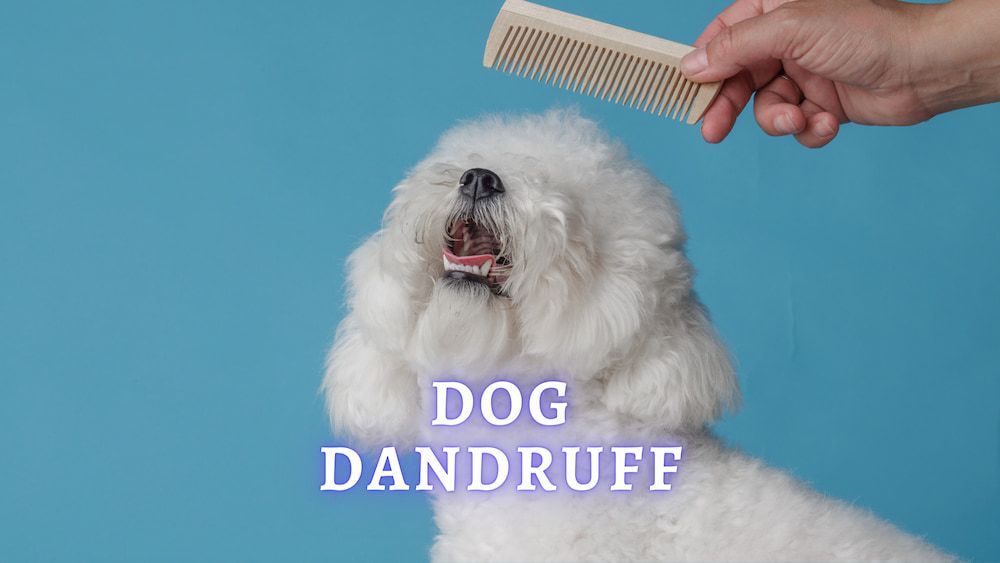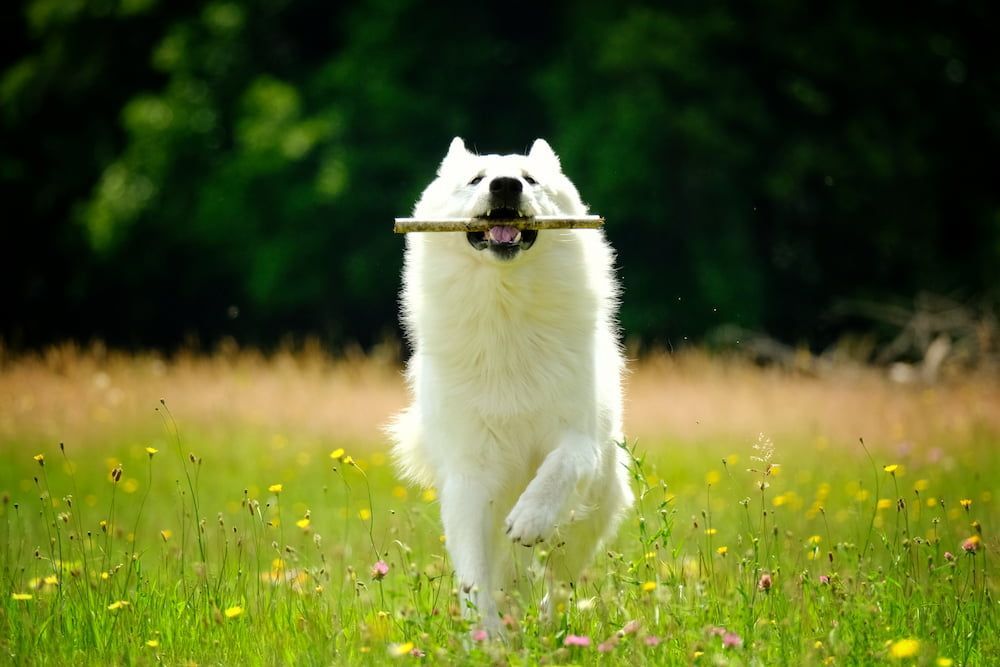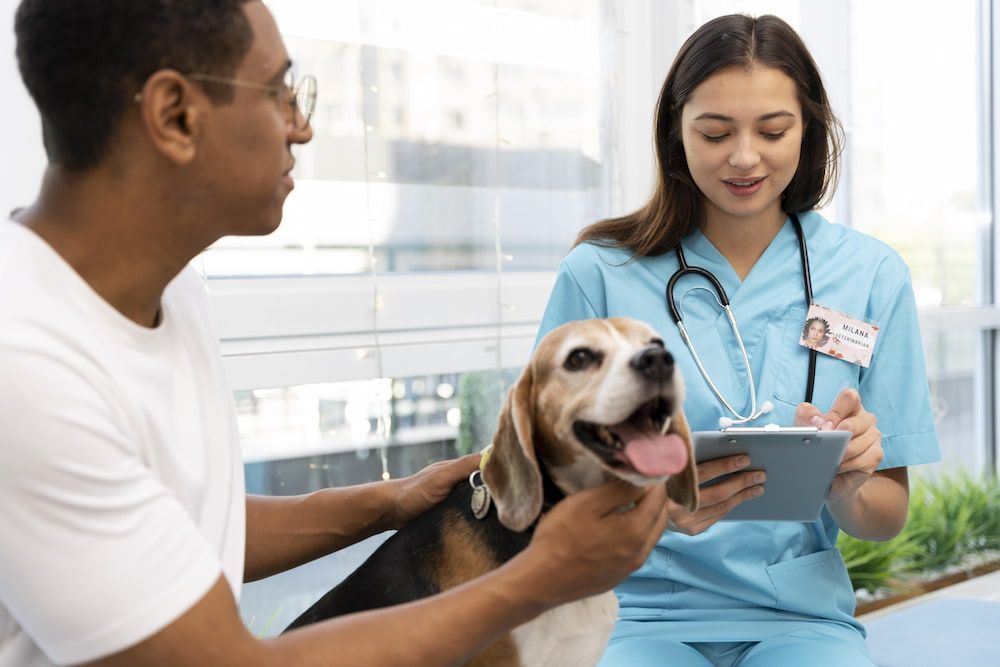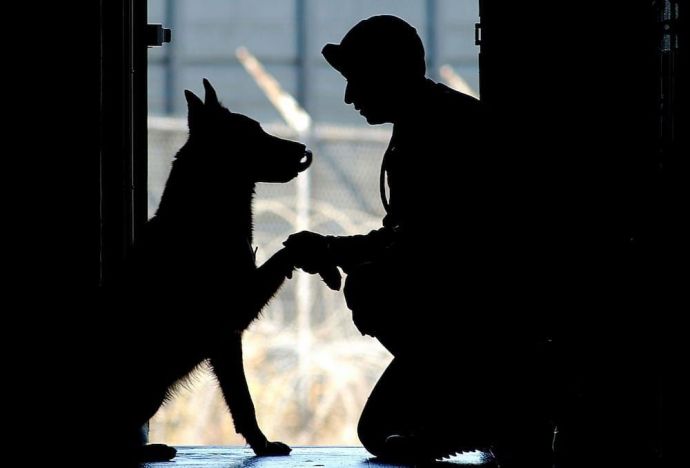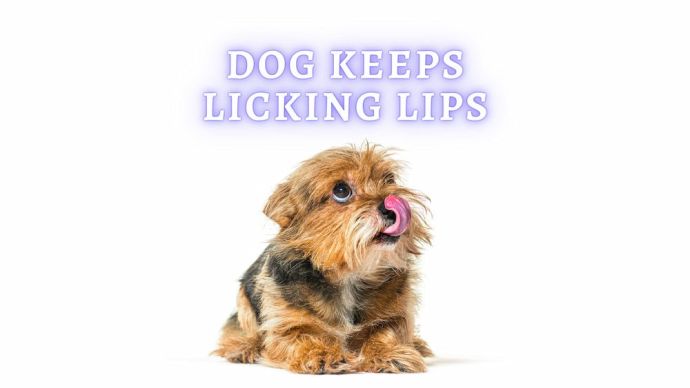Dog Dandruff: Why Does My Dog Have Dandruff?
Written by:
Author: Vicki Smirnova
Vicki Smirnova is a professional writer and editor who adores animals and helps readers get along well with their pets. She has been working in digital media for more than 5 years and has great experience writing content about lifestyle, including pets. Vicki specializes in dog health and nutrition, cat feeding, dog training. She is an aquarium lover and is passionate to write about fish care at home. Also, Vicki headed several websites and worked as a news editor.
View all 244 articlesLearn about our editorial process and veterinary review board.
Reviewed by:
Veterinary review
by Dr. Linda Simon
Dr. Linda Simon is a veterinary surgeon working with seven years of experience. She is a fellow of the British Veterinary Association and specializing in animal medicine. Also, she has been the Woman magazine resident vet for the past two years and writes a regular column for them, focusing on pets and their health.
View all 30 articlesLearn about our veterinary review board
Viewed: 77
Updated on: 12/27/2022
A healthy dog has a soft and pleasant coat. Changes in its structure, such as traces of peeling skin, flaky skin, white particles on the coat, and excessive oiliness of the hairs, immediately become noticeable. Aesthetic problems can quickly become something more. Itchy, irritated, flaky skin and white particles on the coat are signs that your dog has dandruff. What are the causes of dog dandruff, and how can you prevent It? Read on to find out more.
What Is Dandruff?
Dandruff is dead particles of the epidermis. Usually, we may see a small amount due to natural aging and death of skin cells (white flakes). The skin is constantly renewing itself: dead skin cells of the epithelium fall off and are replaced by new ones. This process should occur almost imperceptibly.
The appearance of dandruff can be a symptom of seborrhea. This disease is manifested by the acceleration of the processes of keratinization and desquamation of the surface layer of the skin and disruption of the sebaceous glands.
The appearance of white flakes and excessive oiliness of the skin and hair makes the owners think that their pets may be sick. Such manifestations may be characteristic of seborrhea. Owners puzzled by the quality of their pet’s coat should not be tempted to self-diagnose and self-medicate at home by searching for available information on the Internet. We need to have the pet seen, to get a diagnosis and start the best treatment plan. Seborrhea can be one of the consequences of a systemic disease of the internal organs, and there is often more to the issue than first meets the eye. Seborrhea or dandruff can be one of the first ‘flags’ to the owner that something is amiss with their pet.[1]
There are three main forms of seborrhea in animals:
- Seborrhea sicca (dry skin seborrhea). It is characterized by dry skin and focal or diffuse peeling with the appearance of white flakes or grayish scales. The coat becomes dry and dull.
- Seborrhea oleosa (oily seborrhea). It manifests itself, on the contrary, in an excessive amount of sebaceous secretion. The skin and coat become oily, and there may be an unpleasant odor.
- Mixed form. When an animal shows signs of both dry and oily seborrhea.
Primary seborrhea (a hereditary disease) and secondary are two different forms of the condition. Primary is more common in dogs like the American Cocker Spaniel, English Springer Spaniel, Basset Hound, and West Highland White Terrier breeds. Seborrheic areas are often found in the skin folds, on the neck, abdomen, between the toes, on the muzzle, and under the armpits. The disease may be accompanied by frequent otitis (inflammation of the ears). Treatment is predominantly symptomatic, providing medicine to relieve the symptoms rather than curing the issue. Secondary seborrhoea occurs secondary to underlying disease and can also occur with improper hygiene.
Dandruff may vary in color:
- White – particles of dead epithelium. A sign of dry skin, a nutritional imbalance or poor hydration. Often accompanied by fading of the coat or even partial loss. Abundant dandruff and accompanying baldness can indicate secondary infectious skin diseases, lack of vitamins and minerals in the body, disorders of the sebaceous glands, or endocrine diseases. Those who have got secondary infections tend to be itchy.
- Yellowish or gray dandruff. Sticky particles of the epidermis indicate pathology in the sebaceous glands or hormonal imbalance. The fur looks dirty and greasy. The
- Dog’s coat has bald spots and hair loss, and the parent may be itchy.
- Black dandruff are droplets of coagulated blood or plugs of clogged sebaceous glands. A sign of improper combing of fur or pathology of the sebaceous glands. Sometimes pet owners mistake flea secretions for black dandruff.
- Red (pink) dandruff – particles of the epithelium, exfoliating from the inflamed area of the skin.
Dandruff in a dog can occur on its own or be accompanied by other symptoms that indicate disorders in the body. It is only possible to accurately determine the causes of the appearance with the help of a professional. If you notice dandruff in your pet, be sure to show it to the veterinarian.
How Can I Tell If My Dog Has Dandruff?
You will notice that your dog’s skin looks dry, irritated, or inflamed. On tissue or cotton wool, you can see white particles that can crumble onto the bedding or your clothes. Depending on the severity of dandruff and its causes, you may also notice skin lesions, hair loss, bald spots, and signs of itching.
Clinical signs of primary seborrhea may vary. Common manifestations are a dull coat with excessive flaking of the skin, oily skin with an unpleasant odor and a special form of inflammation of the external auditory canal (hyperplastic ceruminous otitis media). Clinical signs are especially pronounced around the eyes and mouth, on the auricle, armpits, or in the groin area. Unless there is a secondary infection, this condition should not be itchy for the dog.
Secondary seborrhea is manifested by peeling and increased skin oiliness, and inflammation of the external auditory canal (ceruminous otitis media) can also be observed. The severity of clinical symptoms depends on the primary cause, and the disease proceeds individually for each patient. In general, systemic disease (endocrine disorders, nutritional deficiencies, bowel or liver disease) lead to a generalized form (when lesions occur over most of the body surface) that is initially nonpruritic. Itching develops when seborrhea is complicated by bacterial infections and/or fungal skin infections.
Seborrheic dermatitis in dogs is a complication of seborrhea. The skin has a peeling, greasy appearance with signs of local or generalized inflammation. As with oily seborrhea, seborrheic dermatitis also has a high risk of active proliferation of bacteria or fungi (Malassezia or Candida spp.) on the skin. The presence of these fungal microorganisms further exacerbates the already increased oiliness of the skin. In addition, Malassezia fungi grow the rate of skin cell division, creating a vicious circle. That is, the peeling of the skin are favorable conditions for the reproduction of fungi, and Malassezia fungi, in turn, increase the production of sebaceous secretion, aggravating the course of seborrheic dermatitis. This should be remembered since, even in advanced cases, the manifestations of seborrhea can be eliminated. However, clinical signs can only disappear when an effective antifungal treatment is prescribed.
The classic localized form of canine seborrheic dermatitis is characterized by round, hairless plaques with redness and scaling and later with hyperpigmentation (darkening of the skin). This form must be distinguished from other diseases, such as pyoderma (purulent skin lesions) or dermatophytosis (ringworm), in which very similar lesions appear on the skin. In addition, in the early stages of the development of a generalized form of demodicosis (a parasitic disease), the skin in dogs can be either greasy or peeling.[2]
What Causes Dandruff?
The causes of dandruff can only be established by a veterinarian, and a proper diagnosis ensures we can promptly start on the right treatment plan. The main factors that provoke dandruff in a dog are:
- Excessive dryness of the pet’s skin. If this is due to a change in temperature, then the problem is solved by grooming, maintaining adequate hydration, and moisturizing shampoos. A humidifier in the home may also be of use.
- Improper diet. Overeating, unhealthy foods, and imbalanced diets can lead to excessive sebum production or, conversely, to dry skin. Feed your pet with a complete and balanced food tailored to their life stage.
- Food allergies.
Food allergies can cause various signs, including itchy skin, dandruff, ear infection, and diarrhea. Those with allergies should be put on a hypoallergenic diet or one with a novel protein source.
Dr. Linda Simon.
RELATED: Best Dog Food for Allergies (Vet Approved)
- Parasites. Fleas, mites, and lice can all live on our dogs. Feeding on skin and blood, they cause unbearable itching and damage the coat and skin of the animal.
- Disease – hormonal disorders, atopic dermatitis and autoimmune disease etc. Skin issues can often be a sign of a more serious underlying issue. This is why a full health check is important for those with skin disease.
- Shedding. During the period of hair renewal, the dog may experience mild itching and shedding. After the end of the molt, the loss of the coat stops, dandruff disappears.
- Stress. If the animal is under stress (such as when boarding or after the loss of a family member), this can manifest as physical symptoms which can include skin disease.
- Improper grooming. A brush for a dog should correspond to the characteristics of the coat (length, thickness), sensitivity of the animal’s skin, and body size. Otherwise, we may damage the skin.
- Age.
Dandruff can be more common in puppies, as well as in seniors who tend to suffer with more underlying medical conditions as they age. –
Dr. Linda Simon
Often, dog owners attribute the cause of dandruff to poor hygiene and begin to bathe their dog more often. This can strip the natural oils away, making the problem worse.
When To See A Vet
If your dog is constantly scratching, suffering from dandruff, itching or losing fur, it is very important to visit a veterinarian. Dandruff is a fairly common occurrence, but a professional needs to exclude the possibility of other diseases, such as atopic dermatitis. The doctor will conduct an examination, take the necessary tests and prescribe the right treatment for your pet.
Diagnosis of the cause of a dog’s dandruff may include a skin scraping to look for parasites, a microbial culture to check for fungal and bacterial skin infections, an acetate strip test, and/or a blood test to check for underlying systemic disease.
Diagnosis and Treatment of Dandruff
For the treatment of primary and secondary seborrhea, topical therapy can be used; in long-haired dog breeds, it is recommended to trim the coat before applying it. Dogs are bathed using special dandruff shampoo twice a week for 1-2 weeks. Patients with very oily coats may need to bathe every other day for 2-3 weeks. Unlike primary seborrhea, local therapy for secondary seborrhea may differ from patient to patient and will be tailored to the patient. This is because there are many possible causes for this condition. As the underlying disease is treated, the interval between bathing increases. Excessive bathing of dogs exacerbates seborrhea. If on the appointed day of bathing the coat is satisfactory, then the procedure should be postponed until the coat starts to deteriorate.
The choice of shampoo for bathing a dog depends on the form of seborrhea. In the presence of dry and inflamed skin, moisturizing hypoallergenic dog shampoos, cream shampoos with colloidal sulfur, softening medicated shampoos containing chlorhexidine and antimicrobial shampoo with spherulites are used. For more severe skin flaking, products containing sulfur and salicylic acid are suitable, and for fungal overgrowth, products with antifungal activity are suitable.
In the presence of an excessively contaminated coat, before using anti-seborrheic shampoos, preliminary bathing with conventional means is performed. To achieve the maximum effect, specialized anti-dandruff shampoo are left for 10-15 minutes, then the dog is thoroughly rinsed. For the treatment of the oily form of seborrhea, shampoos with a stronger effect are used, while bathing is carried out more often than with the dry form. These dogs are more susceptible to secondary bacterial infections and should be treated appropriately.
Dogs with soft to moderately oily skin can be bathed with shampoos containing sulfur, salicylic acid, or tarry products. Dogs with very oily skin are often bathed with selenium sulfide shampoos. After successful treatment of excess oil in the coat, shampoos with a weaker effect are used. As an additional remedy for the treatment of a localized form of seborrhea, antiseborrheic drops for external use can be used. Such preparations are applied to dry areas of the skin, observed in the dry form (seborrhea sicca). Drops are able to restore the lipid barrier of the skin. For the treatment of inflammation of the external auditory canal, agents are used that promote the dissolution and removal of earwax. The frequency of application is selected individually at the discretion of the veterinary dermatologist.[3]
Home Remedies for your dog’s coat
You can deal with a dog’s dandruff on your own in the following ways:
- maintaining a comfortable air temperature and humidity in the place where the dog is kept;
- providing food rich in nutrients that are essential for healthy skin and coat.;
- the use of suitable special shampoos (shampoo for humans is not suitable, since human skin is more acidic than dogs, and even the most gentle shampoos can cause dry skin in your pet);
- skin supplements are a wise investment; adding cod liver oil or fish oil to your dog’s diet to support skin health (in consultation with your veterinarian).
READ MORE: Reasons Why Your Dog Scratching Face
Final Notes about dog’s skin
Canine dandruff can be easily cured if it is detected in time and the cause is identified. In advanced cases, treatment can take several months and will incur significant costs. As dandruff can be a sign of a more serious medical issue, a vet check is always advised.
FAQ
How do you get rid of dead skin cells on a dog?
Pet owners are advised to start with regular dog grooming. Removing matted hair leaves parasites with less breeding ground and ensures the skin is ventilated. Regular brushing allows you to monitor the condition of the dog’s skin and coat and detect possible problems earlier. It also spreads the natural oils. Your veterinarian may recommend using a specially formulated dog dandruff shampoo and thoroughly drying your dog’s coat after bathing.
What causes dandruff in dog’s skin?
Causes in dogs will vary. Sometimes the root cause of canine dandruff is difficult to pinpoint. Since skin problems can have genetic, environmental, nutritional, or parasitic causes, several different options for the problem and its treatment must be considered.
Should I be worried if my dog has dandruff (flaky skin)?
With severe dandruff in a dog, you need to seek help from a veterinarian. If your pet has other symptoms, such as itching, redness, or scaly patches, contact your veterinarian immediately.
Article Sources:
- “Seborrhea in Dogs | VCA Animal Hospital.” Vca, vcahospitals.com/know-your-pet/seborrhea-in-dogs.
- Seborrhea in Dogs. 20 Oct. 2021, petmd.com/dog/conditions/skin/c_dg_canine_seborrhea.
- Campbell, K.L. 1997. Diagnosis and management of keratinization disorders in dogs. ACVIM – Proceedings of the 15th Annual Vet. Medical Forum. pp 220-222.
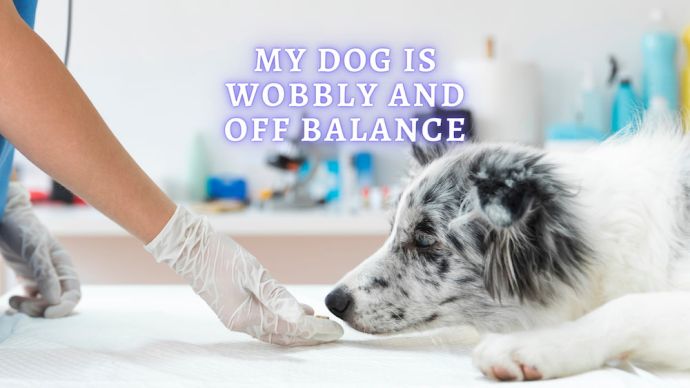 Dog Care My Dog is Wobbly and Off Balance: What Should I Do? (Vet-Approved Advice)
Dog Care My Dog is Wobbly and Off Balance: What Should I Do? (Vet-Approved Advice) - 5748
- 0
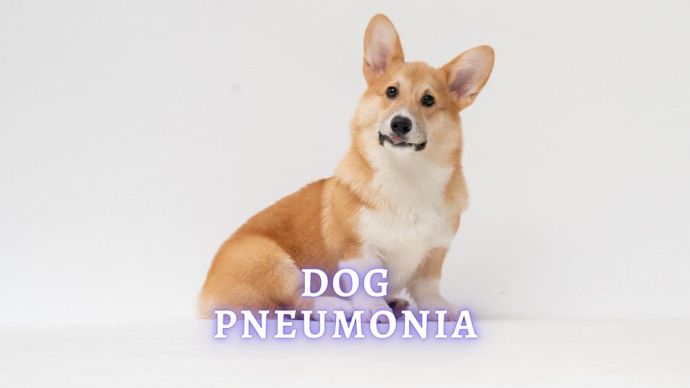 Dog Veterinary Tips Pneumonia in Dogs: Symptoms, Diagnosis, Treatment and Recovery (Vet Advice)
Dog Veterinary Tips Pneumonia in Dogs: Symptoms, Diagnosis, Treatment and Recovery (Vet Advice) - 479
- 0
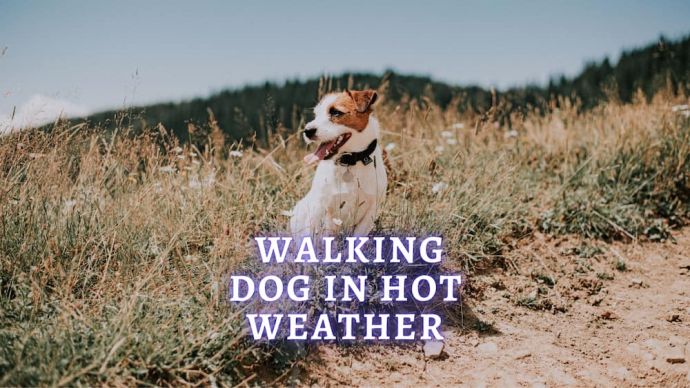 Dog Care When Is It Too Hot To Walk Your Dog? Tips On Walking Your Dog In Hot Weather
Dog Care When Is It Too Hot To Walk Your Dog? Tips On Walking Your Dog In Hot Weather - 125
- 0
 Dog Veterinary Tips Why is my Dog throwing up: Causes and Preventing (Veterinary Advice)
Dog Veterinary Tips Why is my Dog throwing up: Causes and Preventing (Veterinary Advice) - 23424
- 5
 Dog Care Why Is My Dog Bleeding From Its Butt? Causes and treatment of rectal bleeding in the dog
Dog Care Why Is My Dog Bleeding From Its Butt? Causes and treatment of rectal bleeding in the dog - 22076
- 0
 Dog Care My Dog Keeps Scratching His Mouth: Reasons Why Your Dog Scratching Face
Dog Care My Dog Keeps Scratching His Mouth: Reasons Why Your Dog Scratching Face - 17561
- 1









